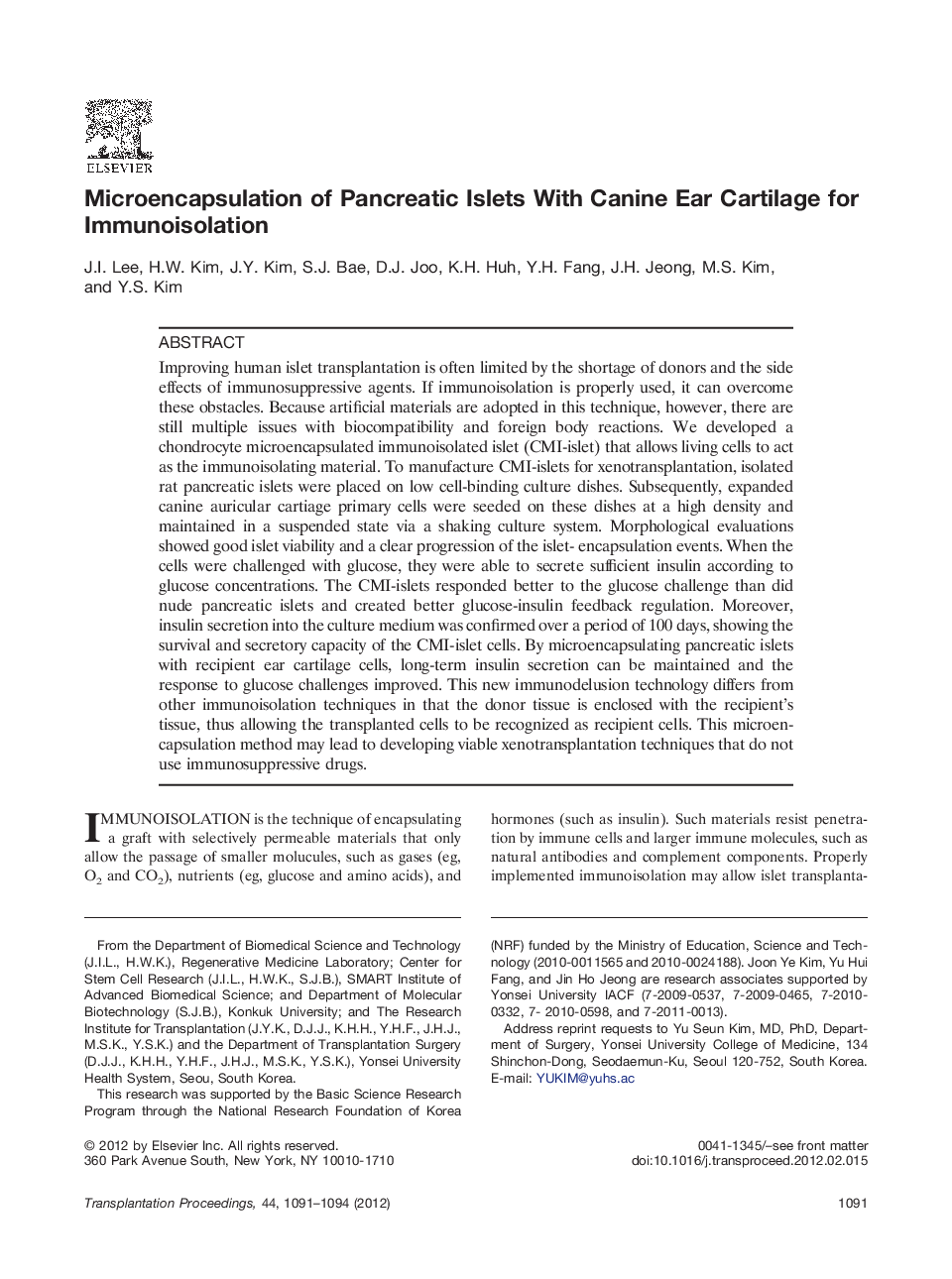| کد مقاله | کد نشریه | سال انتشار | مقاله انگلیسی | نسخه تمام متن |
|---|---|---|---|---|
| 4256871 | 1284535 | 2012 | 4 صفحه PDF | دانلود رایگان |

Improving human islet transplantation is often limited by the shortage of donors and the side effects of immunosuppressive agents. If immunoisolation is properly used, it can overcome these obstacles. Because artificial materials are adopted in this technique, however, there are still multiple issues with biocompatibility and foreign body reactions. We developed a chondrocyte microencapsulated immunoisolated islet (CMI-islet) that allows living cells to act as the immunoisolating material. To manufacture CMI-islets for xenotransplantation, isolated rat pancreatic islets were placed on low cell-binding culture dishes. Subsequently, expanded canine auricular cartiage primary cells were seeded on these dishes at a high density and maintained in a suspended state via a shaking culture system. Morphological evaluations showed good islet viability and a clear progression of the islet- encapsulation events. When the cells were challenged with glucose, they were able to secrete sufficient insulin according to glucose concentrations. The CMI-islets responded better to the glucose challenge than did nude pancreatic islets and created better glucose-insulin feedback regulation. Moreover, insulin secretion into the culture medium was confirmed over a period of 100 days, showing the survival and secretory capacity of the CMI-islet cells. By microencapsulating pancreatic islets with recipient ear cartilage cells, long-term insulin secretion can be maintained and the response to glucose challenges improved. This new immunodelusion technology differs from other immunoisolation techniques in that the donor tissue is enclosed with the recipient's tissue, thus allowing the transplanted cells to be recognized as recipient cells. This microencapsulation method may lead to developing viable xenotransplantation techniques that do not use immunosuppressive drugs.
Journal: Transplantation Proceedings - Volume 44, Issue 4, May 2012, Pages 1091–1094